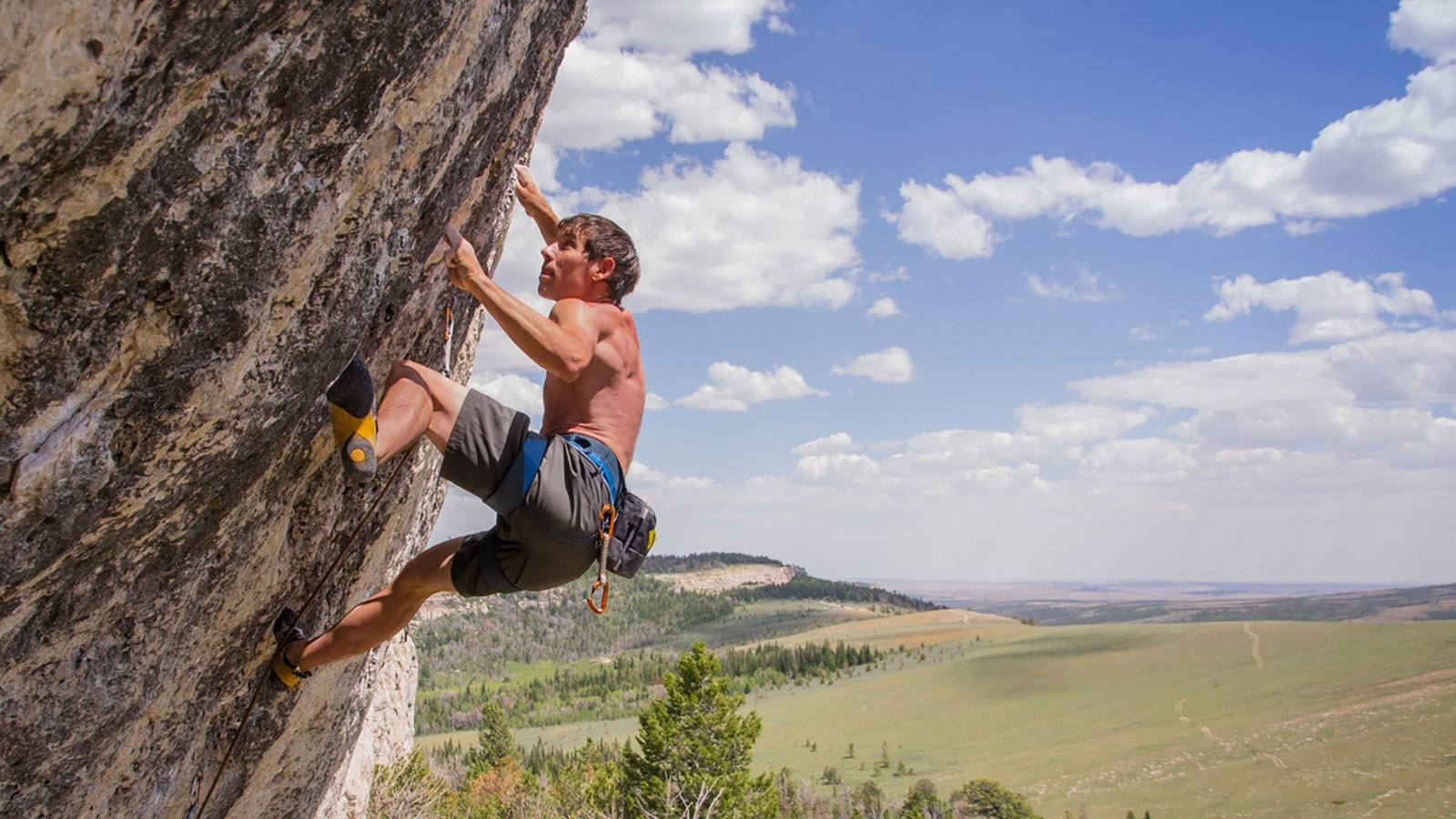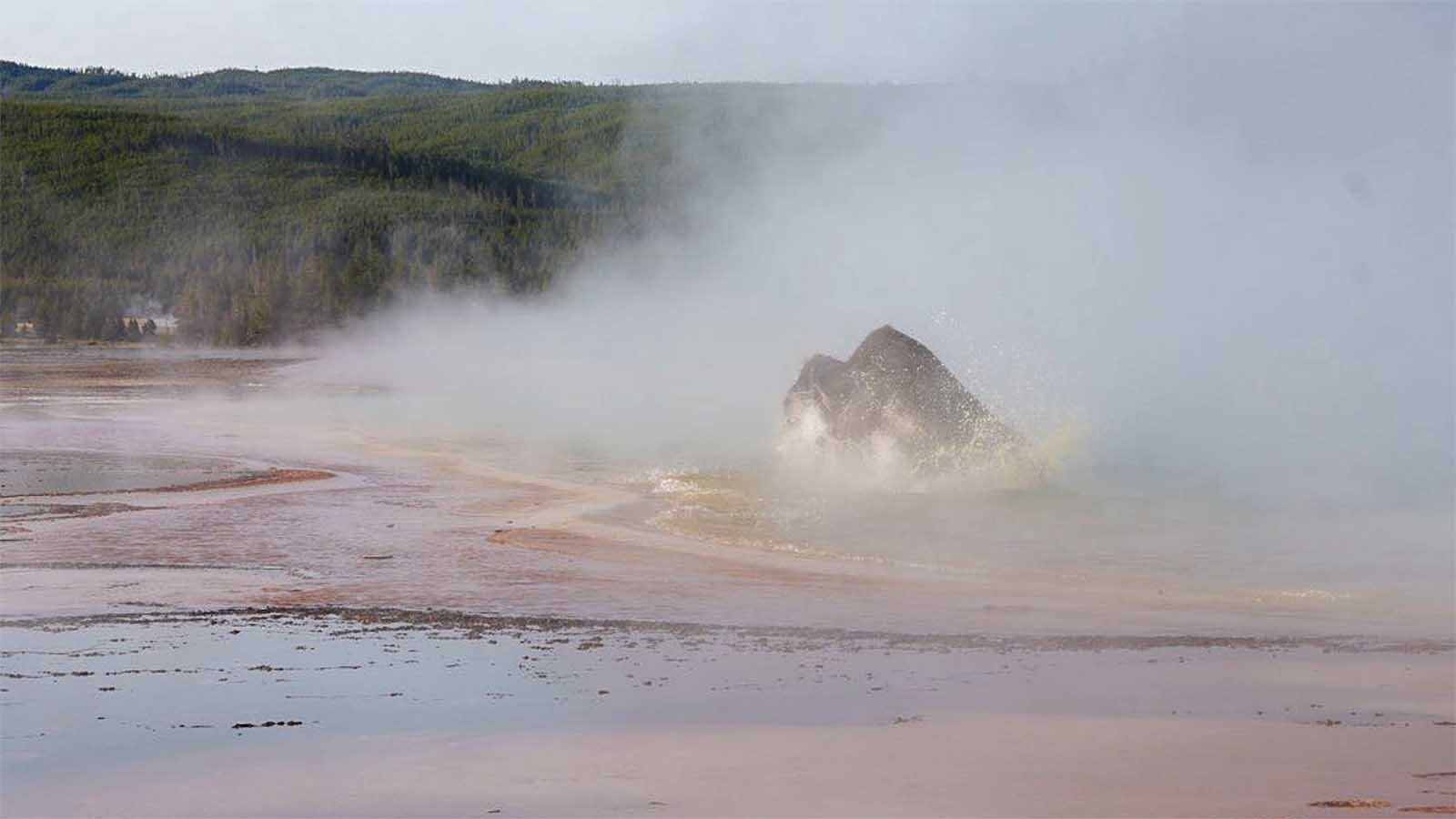Climbers leave behind a multimillion-dollar wall of spending in Wyoming every year, according to a report that tracks the popular sport in one part of the Cowboy State – Fremont County.
WyoClimbers commissioned the study, which found that 37,000 climbers lay out $4.5 million in direct expenditures for food, lodging, transportation and retail items in Fremont County every year.
They spend another $1.1 million getting to and from Lander.
That economic windfall, meanwhile, has a ripple effects that supports another $1.7 million in wages for local workers, as well as 51 jobs in the study area.
These economic impacts also may be somewhat understated given that many climbers report they are spending less than usual since the COVID-19 pandemic.

Economic Potential Is Huge
Climbing has grown into one of the world’s most popular activities.
It’s increasingly featured in television ads and has been included as an Olympic sport. There’s even an International Federation of Sport Climbing World Cup, as well as gyms that are now devoted to bringing this sport to the masses in a safe way.
Wyoming, meanwhile, has some of the best adventures available in the climbing world. It’s a tourism opportunity that has been surprisingly under-marketed so far, one climbing enthusiast told Cowboy State Daily.
“It actually is quite surprising,” said WyoClimbers member and founder Sam Lightner. “When I first met with Governor Gordon when he was a candidate, he singled it out as one of the things that he said ought to be bigger in our state.”
Untapped Potential
Neighboring Colorado, California and Utah all have large climbing communities, Lightner said. Smart marketing to these nearby enthusiasts could potentially bring thousands more climbers to Wyoming for adventure.
That’s an opportunity not just for Lander, he said.
“If you spread yourself a little bit further out in the state, you’ve got unique things like Devils Tower, you’ve got Ten Sleep Canyon, you’ve got the Tetons, you’ve got Vedauwoo,” Lightner said. “So Wyoming is just a really good place for a climber to live.
“You even have lots of ice climbing up around Cody in the winter months. It’s just a great, great place — but there’s also a huge amount of variation straight out our back door in Lander.”

Low Budget
Climbing does not take a huge investment from communities interested in cultivating the sport as an economic driver. No expensive amphitheaters are required. In fact, anything like that would tend to detract from the great outdoors experience most climbers seek.
“You don’t have to build a carnival ride for climbers to be entertained. They want to be out in the wild,” Lightner said. “So, climbing areas tend to leave places as open spaces. Not that there’s no buildings, but there doesn’t need to be, you know, that kind of structure.”
Easy To Begin
About the only investment really required are some trails to the climbing opportunity, and then there are the small anchors, 3/8-inch in diameter, that are spaced every 80 to 100 feet on a climb.
Those are generally placed by climbers themselves, but they need to be periodically upgraded or replaced, since they can wear out.
“They’re re-used by everybody, so it’s a very clean form of recreation,” Lightner added.
In fact, climbers in general tend to think of themselves as environmentalists, and three’s a whole culture built around keeping wide open climbing spaces clean.
“It’s considered really bad form to leave anything garbage-wise,” Lightner said. “It’s a bump up in the economy that tends to not be one that you see having a visual impact.”

Climbing Opens Door For New Residents
Climbing, Lightner added, is the reason he chose to live in Lander.
He has traveled the globe, climbing rock faces in many foreign and exotic locations. But ultimately he settled on Lander as the best of the best.
“I had a peer group here, and Lander is also just a really nice community,” he said. “It’s still got a small town feel to it. You know, everybody turns out on Main Street when the football team comes back in after having won a game and the Fourth of July parade is a big deal. It’s just a nice community and then, frankly, it’s got an incredibly diverse amount of climbing opportunities.”
Those opportunities range from tall granite peaks and wind rivers to sandstone buttresses and dolomite buttresses, not to mention Sinks Canyon and granite mountains — these are all endlessly fascinating, Lightner said.
Climbing opportunities also are year-round.
“Lander is kind of the banana belt of Wyoming,” he said. “We’re on the lee side of the Wind River Range, so we get far less snow. We have far less wind and it’s warmer in this valley.”
The rocks on many faces are also brown, Lightner added, which means they can be as much as 30 degrees warmer than the temperature elsewhere. It’s not uncommon to see someone climbing these rock faces in a T-shirt in what is 10-degree weather everywhere else.
‘Huge Ripple Effect’
Lightner is not the only climber to choose Lander as home primarily for its climbing opportunities.
Among these Lightner counts Mike Lilygren, who is one of the owners of Maven, an optics company, and Wind River Outdoor mountain guides.
There’s also the National Outdoor Leadership School, which employs 300 people, along with several other mountain sports businesses.
“It’s a huge (ripple) effect,” Lightner said.
Climbing has enduring popularity, Lightner believes, and is not just a fad that will be here one year and gone the next.
“You have to have cardio, you have to have upper body strength, lower body strength, you have to have flexibility, all of that,” he said. “But it’s problem-solving, too.
“How are you going to get your body in that position? How are you going to get your hand to that spot, your foot to that spot, and so forth. So, you’re constantly having to engage your brain. And I think that’s a lot of (the reason for climbing’s popularity.)”
While Lightner believes there’s room to grow the sport in Wyoming with better marketing, that wasn’t the main reason WyoClimbers decided to commission its study.
“Our goal is just to maintain access to the mountains and make sure people understand that we’re not just a bunch of kooks, and we do have a positive impact on communities,” Lightner said. “But it probably is going to grow, just because Wyoming has so many climbing opportunities.”





